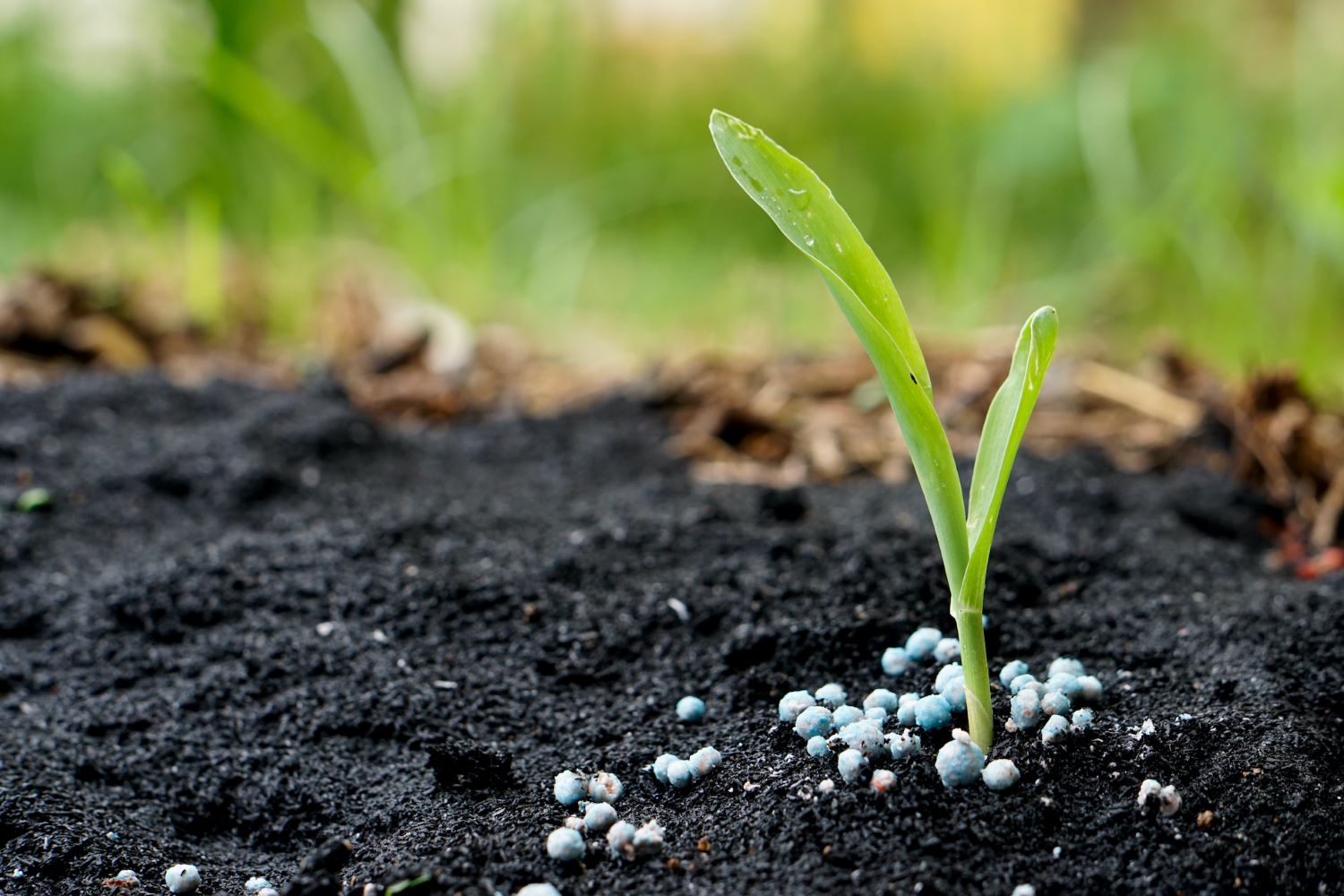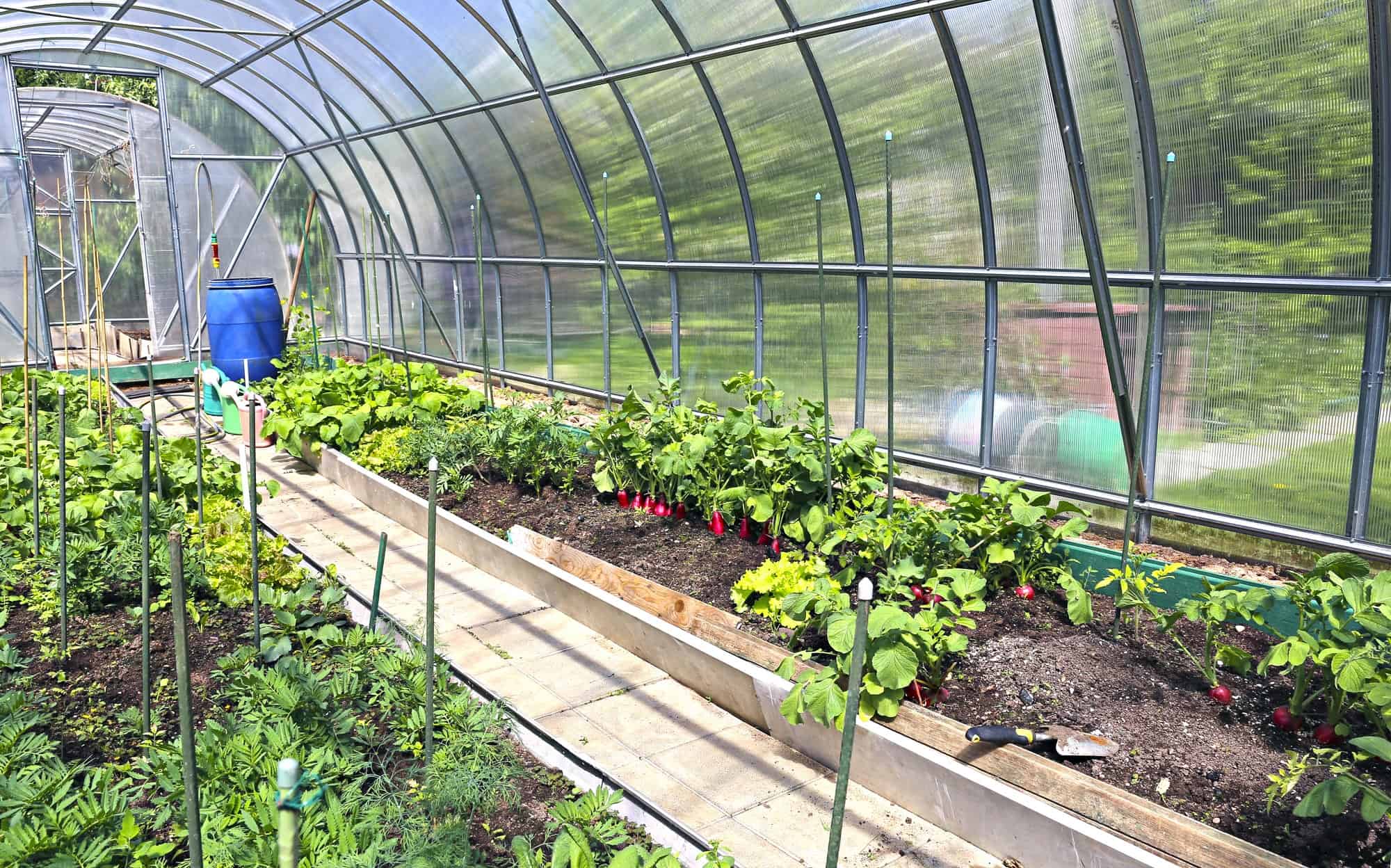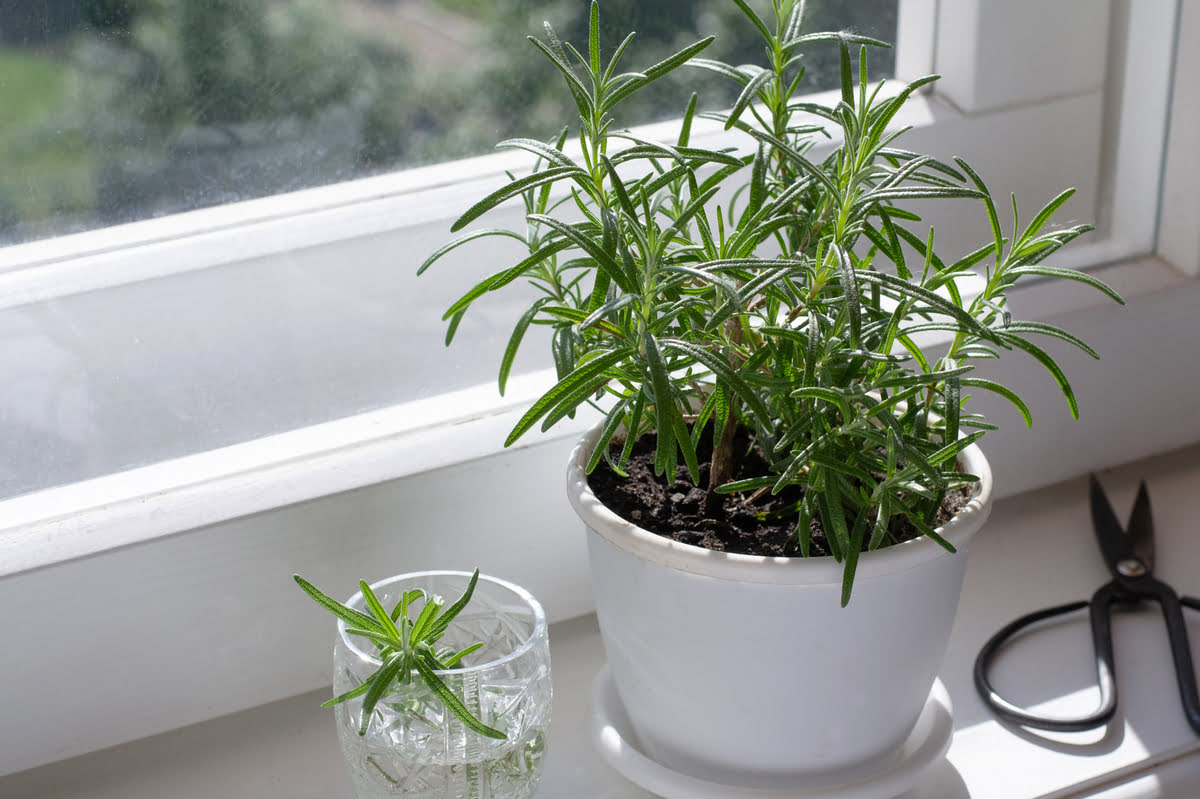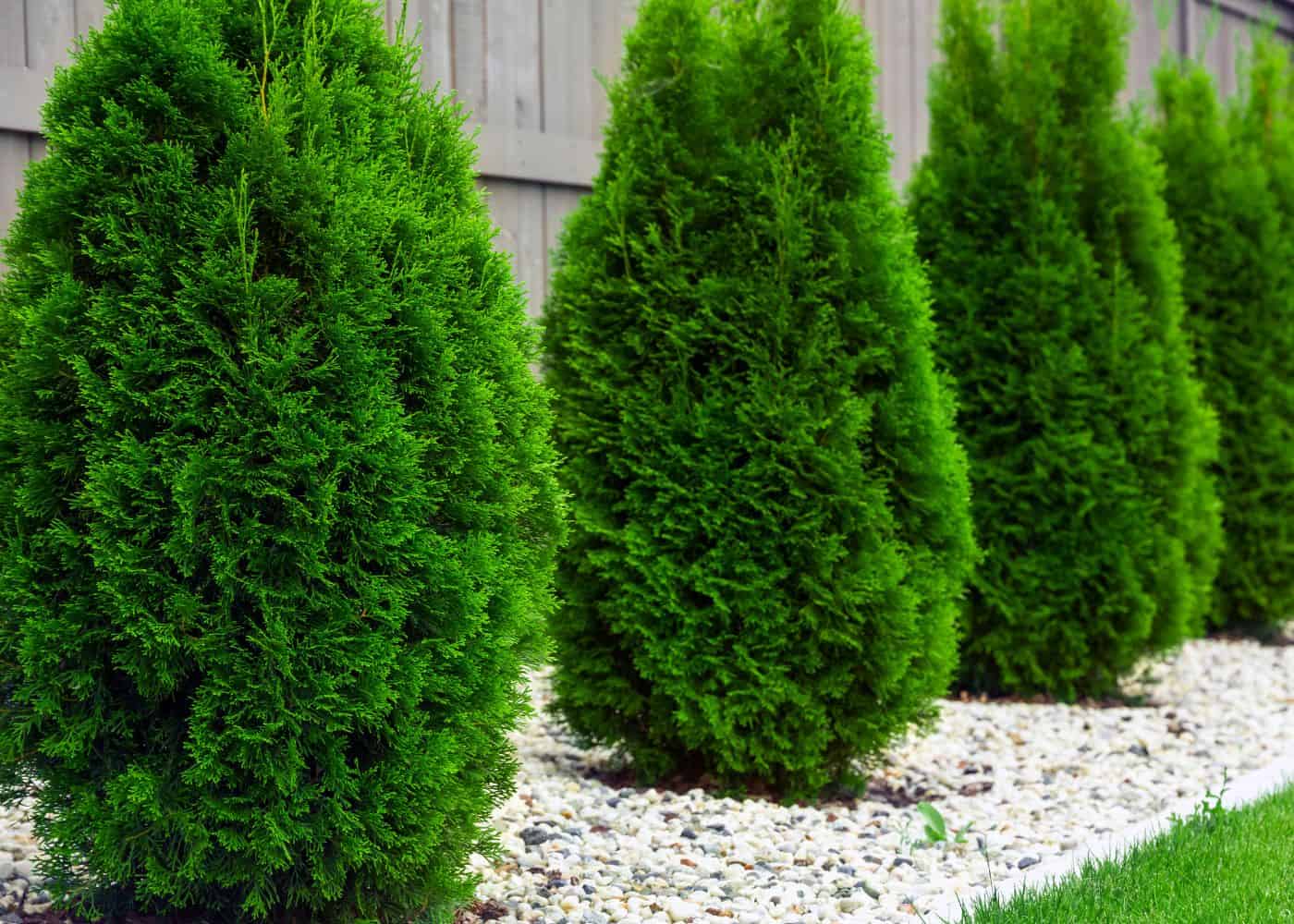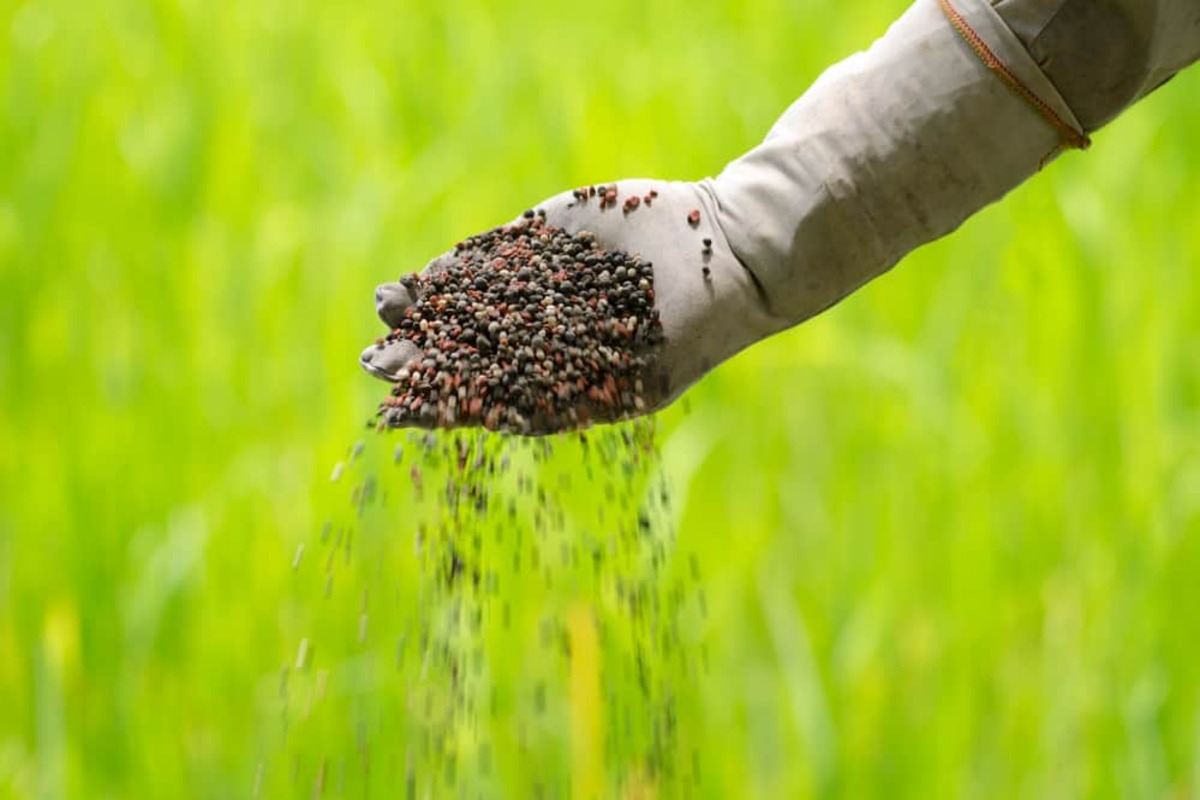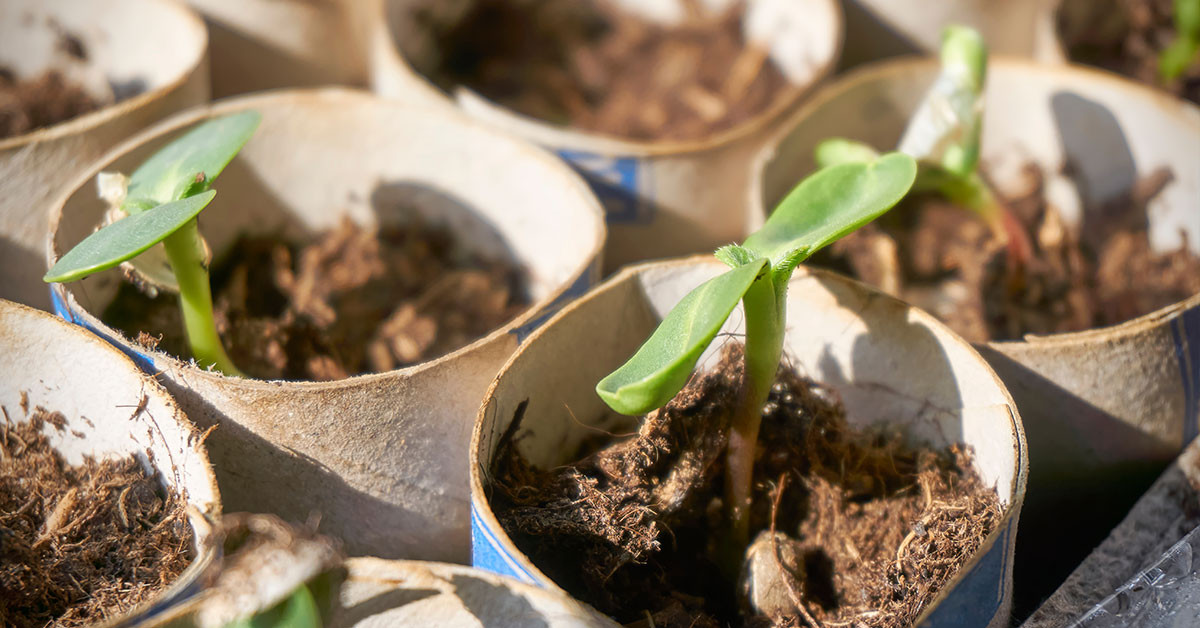Home>Gardening Tips and Tricks>Eco-Friendly Gardening>How Long Does It Take To Compost
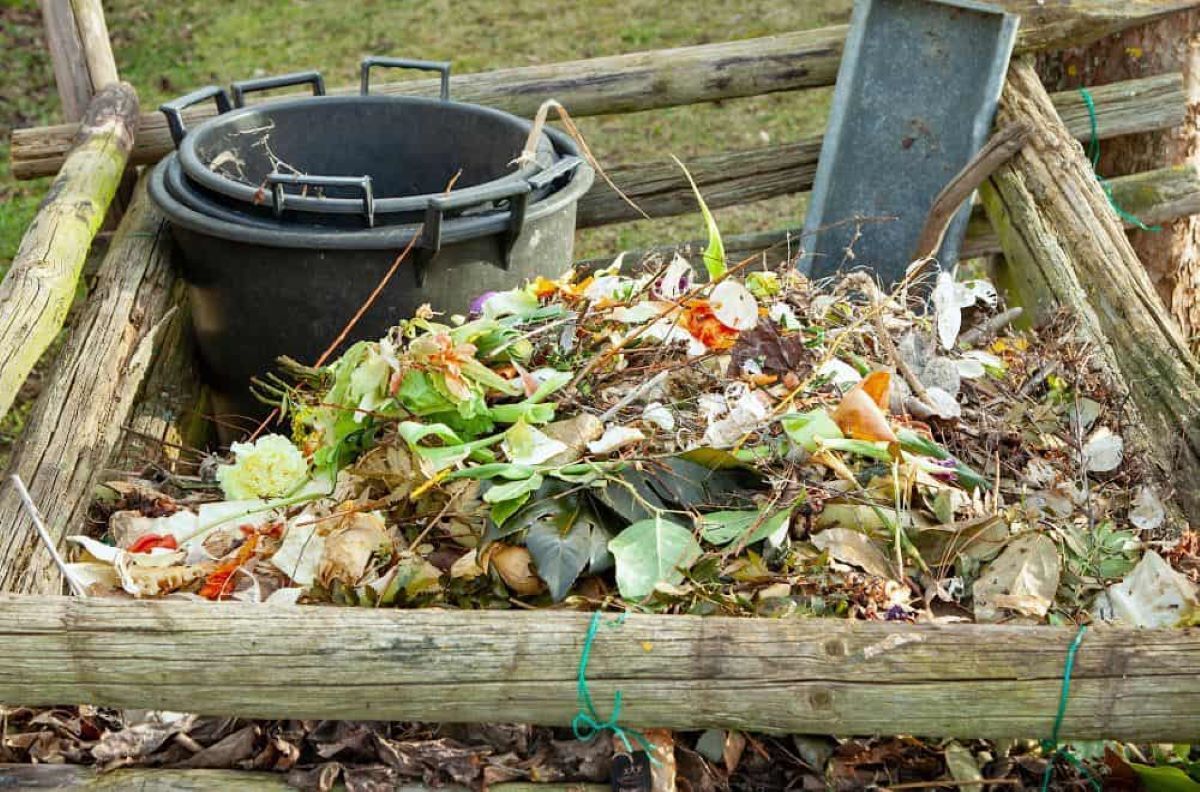

Eco-Friendly Gardening
How Long Does It Take To Compost
Modified: January 22, 2024
Discover how long it takes to compost with eco-friendly gardening. Learn the benefits of composting for your garden and the environment.
(Many of the links in this article redirect to a specific reviewed product. Your purchase of these products through affiliate links helps to generate commission for Chicagolandgardening.com, at no extra cost. Learn more)
Table of Contents
- Introduction
- What is Composting?
- Factors Influencing Composting Time
- Organic Materials and Their Decomposition Rates
- Size and Management of Compost Pile
- Carbon-to-Nitrogen Ratio
- Moisture and Aeration Levels
- Temperature and Microbial Activity
- Types of Composting Methods
- Cold Composting
- Hot Composting
- Vermicomposting
- Composting with Bokashi
- Using Compost in the Garden
- Conclusion
Introduction
Welcome to the world of eco-friendly gardening! In this fast-paced world, where sustainability and environmental consciousness have become paramount, eco-friendly gardening practices have gained immense popularity. One such practice that has caught the attention of many gardeners is composting.
Composting is a natural process of decomposing organic materials, such as kitchen scraps and garden waste, into a nutrient-rich soil amendment called compost. It mimics the natural decomposition process, but we can control and accelerate it to obtain high-quality compost for our gardens.
Composting is not only great for your garden but also for the environment. By diverting organic waste from landfills and utilizing it to create nutrient-rich compost, you are reducing greenhouse gas emissions and conserving valuable landfill space. Plus, composting reduces the need for synthetic fertilizers, promoting healthier soil and plants.
However, one question that often arises when it comes to composting is, “How long does it take to compost?” The answer to this question is not straightforward, as several factors can influence the composting time.
Throughout this article, we will explore these various factors and discuss different composting methods to help you understand the composting process better and how to optimize it for efficiency.
What is Composting?
Composting is a natural process that harnesses the power of decomposition to break down organic materials and transform them into nutrient-rich compost. It is essentially a controlled form of decomposition, allowing organic matter to decompose efficiently, producing a valuable soil amendment for gardening.
The process of composting involves microorganisms, such as bacteria and fungi, breaking down organic materials into simpler substances. These microorganisms require oxygen, moisture, and the proper balance of carbon and nitrogen (C:N) to thrive and carry out the decomposition process effectively.
Organic materials suitable for composting include kitchen scraps (like fruit and vegetable peels), garden trimmings, leaves, grass clippings, coffee grounds, and even small amounts of paper and cardboard. These materials are often referred to as “green” and “brown” waste.
Green waste, such as fresh grass clippings and vegetable scraps, are high in nitrogen. Brown waste, like dried leaves and wood chips, is high in carbon. Achieving the right balance of these materials is crucial for successful composting.
When the right conditions are met in a compost pile, microorganisms break down the organic matter, generating heat as a byproduct. This heat helps to speed up the decomposition process and kill off any weed seeds or pathogens that may be present in the compost pile.
As the organic materials decompose, they undergo a transformation into dark, crumbly, and earthy-smelling compost. This finished compost is rich in nutrients, humus, and beneficial microorganisms, making it an excellent soil amendment that improves soil structure, fertility, and moisture-holding capacity.
Composting not only reduces waste but also helps to create a more sustainable garden ecosystem. It decreases the need for chemical fertilizers and promotes healthier plants by providing them with the essential nutrients they require.
In the next section, we will explore the various factors that can influence the time it takes for composting to occur.
Factors Influencing Composting Time
Composting time can vary depending on several factors that influence the speed at which organic materials decompose. By understanding these factors, you can optimize your composting process and achieve faster results. Here are some key factors that can influence composting time:
- Moisture: Adequate moisture is essential for the decomposition process. Microorganisms require a moist environment to thrive and break down the organic matter. If the compost pile is too dry, decomposition slows down. On the other hand, if it is too wet, it can become waterlogged and anaerobic, inhibiting microbial activity. Maintaining a moist, but not overly wet, compost pile is crucial.
- Aeration: Oxygen is necessary for the aerobic microorganisms responsible for decomposition. A well-aerated compost pile allows for proper airflow, facilitating the breakdown of organic materials. Turning the compost pile regularly helps to introduce oxygen and distribute moisture evenly. Lack of aeration can result in a slow, anaerobic process and unpleasant odors.
- Carbon-to-Nitrogen (C:N) Ratio: The C:N ratio is a crucial factor in composting. Microorganisms require carbon to provide energy and nitrogen for protein synthesis. Achieving the right balance between carbon-rich “brown” waste (such as dried leaves and wood chips) and nitrogen-rich “green” waste (like vegetable scraps and grass clippings) is essential. A balance of approximately 30 parts carbon to 1 part nitrogen provides optimal conditions for decomposition.
- Temperature: The temperature of the compost pile can directly impact the speed of decomposition. Microorganisms are most active in the temperature range of 120-160°F (49-71°C), known as the thermophilic phase. During this phase, decomposition occurs at a faster rate, and pathogens and weed seeds are killed off. Monitoring and maintaining the temperature within this range can accelerate composting, especially in hot composting methods.
- Particle Size: The size of the composting materials can affect decomposition. Smaller particles break down more quickly compared to larger ones. Chopping or shredding bulky materials, like branches or thick stems, can help speed up the process.
By understanding and managing these factors, you can create the optimal conditions for composting and achieve faster decomposition. In the next section, we will explore different composting methods that you can choose from based on your preferences and available resources.
Organic Materials and Their Decomposition Rates
The rate at which different organic materials decompose can vary widely. Some materials break down quickly, while others take longer to decompose fully. Understanding the decomposition rates of different organic materials can help you manage your compost pile more effectively. Here is a breakdown of the decomposition rates of common organic materials:
- Fruit and Vegetable Scraps: These kitchen waste items generally decompose relatively quickly. The high moisture content and relatively small size of fruit and vegetable scraps allow for faster decomposition. Chop them into smaller pieces before adding them to the compost pile to speed up the process.
- Grass Clippings: Fresh grass clippings are high in nitrogen and decompose rapidly. However, avoid adding thick layers of grass clippings, as they can become compacted and restrict airflow. Mix grass clippings with other materials to maintain a balanced C:N ratio.
- Leaves: Dry leaves are carbon-rich and decompose more slowly than nitrogen-rich materials. Whole leaves can take several months to break down fully. To speed up decomposition, consider shredding or mowing over the leaves before adding them to the compost pile.
- Wood Chips and Branches: Woody materials, such as wood chips and branches, are high in carbon and can take a long time to decompose fully. Chipping or shredding them into smaller pieces will speed up the process. It’s best to use wood chips and branches as a bulking agent or in hot composting methods.
- Coffee Grounds: Coffee grounds are considered “green” waste due to their high nitrogen content. They decompose relatively quickly and can provide an excellent boost of nutrients to your compost pile. However, it’s essential to balance coffee grounds with other materials to maintain the ideal C:N ratio.
These are just a few examples of organic materials commonly used in composting. It’s important to note that the decomposition rate may also depend on the composting method, environmental conditions, and the size and management of your compost pile.
By understanding the decomposition rates of different organic materials, you can make informed choices when building and managing your compost pile. Incorporating a mix of materials with varying decomposition rates will help maintain a healthy and balanced composting process.
Now that we have explored the factors influencing composting time and the decomposition rates of organic materials, let’s dive into the different composting methods you can choose from based on your preferences and available resources.
Size and Management of Compost Pile
The size and management of your compost pile play a crucial role in the effectiveness and efficiency of the composting process. By understanding how to properly size and manage your compost pile, you can ensure optimal decomposition and achieve high-quality compost. Here are some key considerations:
Size: The size of your compost pile can impact its functionality. Generally, a compost pile should be at least 3 feet in each dimension (length, width, and height) to generate enough heat for efficient decomposition. Smaller piles may not reach the optimal temperature needed to break down materials effectively. On the other hand, a pile that is too large can become difficult to manage and aerate. Finding the right balance in size is important.
Layering: Proper layering is essential for good composting. Start by creating a base layer of coarse materials like twigs or straw to promote airflow. Then, alternate layers of nitrogen-rich “green” waste and carbon-rich “brown” waste, maintaining a balanced carbon-to-nitrogen (C:N) ratio. Aim for each layer to be around 4-6 inches thick. Continue layering until you reach the desired height.
Watering: Maintaining the right moisture level is crucial for composting. The compost pile should be moist, but not waterlogged. If the pile is too dry, it can slow down the decomposition process. On the other hand, if it’s too wet, it can become anaerobic and produce unpleasant odors. Water the pile periodically to keep it adequately moist, similar to a damp sponge.
Aeration: Ensuring proper airflow within the compost pile is essential for aerobic decomposition. Lack of oxygen can lead to anaerobic conditions and slow down the decomposition process. To promote aeration, turn the compost pile regularly using a garden fork or compost turning tool. This helps to mix the materials, introduce fresh oxygen, and prevent compaction.
Compost Pile Covers: Using a cover for your compost pile can help retain moisture, maintain temperature, and prevent excessive moisture loss due to rain. A cover can be as simple as a tarp or a purpose-built compost bin with a lid. Ensure the cover allows for airflow to prevent the pile from becoming too saturated or deprived of oxygen.
Monitoring: Regularly monitor your compost pile to ensure everything is progressing as it should. Check the moisture level, temperature, and odor. Adjust as needed by adding water, turning the pile, or adjusting the materials. Pay attention to any foul odors, which could indicate an anaerobic environment or an imbalance in the compost pile.
By properly managing the size and maintaining the right conditions for your compost pile, you can accelerate the composting process and achieve high-quality compost. In the next section, we will explore the importance of maintaining the correct carbon-to-nitrogen ratio in your compost pile.
Carbon-to-Nitrogen Ratio
The carbon-to-nitrogen (C:N) ratio is a crucial factor in composting as it affects the microbial activity and decomposition rate of your compost pile. Achieving the right balance between carbon-rich “brown” waste and nitrogen-rich “green” waste is essential for successful composting. Here’s why the C:N ratio matters:
C:N Ratio Explained: The C:N ratio refers to the ratio of carbon to nitrogen in the composting materials. Carbon-rich materials, like dried leaves and wood chips, have a higher C:N ratio, while nitrogen-rich materials, such as fresh grass clippings and vegetable scraps, have a lower C:N ratio. Microorganisms responsible for decomposition require both carbon and nitrogen to carry out their metabolic processes and reproduce.
Importance of Balance: Achieving the right balance between carbon and nitrogen is crucial for optimal composting. If the C:N ratio is too high, indicating an excess of carbon, decomposition slows down as there is insufficient nitrogen to support microbial activity. On the other hand, if the C:N ratio is too low, indicating an excess of nitrogen, the excess nitrogen can be lost as ammonia gas, leading to odor issues and nutrient leaching. Finding the right balance ensures that the microorganisms have the necessary nutrients to efficiently break down the organic materials.
Ideal C:N Ratio: The ideal C:N ratio for composting is considered to be around 30 parts carbon to 1 part nitrogen. This ratio provides a balanced and nutritious environment for microbial activity. However, achieving an exact ratio is not necessary, as the decomposition process naturally adjusts the C:N ratio as the organic materials break down. The key is to have a mix of carbon-rich and nitrogen-rich materials to provide a varied nutrient source for the microorganisms.
Adjusting the C:N Ratio: To adjust the C:N ratio, you can add different materials to your compost pile. If the C:N ratio is too high (carbon-rich), add nitrogen-rich materials like fresh grass clippings, kitchen scraps, or manure. If the C:N ratio is too low (nitrogen-rich), add carbon-rich materials like dried leaves, wood chips, or shredded newspaper. Balancing the C:N ratio helps maintain optimal conditions for microbial activity and speeds up the composting process.
Monitoring the C:N Ratio: Monitoring the compost pile and observing the decomposition process can provide valuable insights into the C:N ratio. A well-maintained compost pile with the right C:N ratio will have a pleasant earthy smell and will decompose efficiently. Foul odors may indicate an imbalance in the C:N ratio or other issues that need to be addressed.
Understanding and managing the C:N ratio in your compost pile is essential for successful composting. By achieving the right balance between carbon-rich and nitrogen-rich materials, you create an optimal environment for microbial activity, resulting in faster decomposition and the production of high-quality compost. In the next section, we will explore the role of moisture and aeration in composting.
Moisture and Aeration Levels
Proper moisture and aeration levels are key factors in successful composting. These factors impact the activity of microorganisms and the decomposition process. Understanding how to maintain the right moisture and aeration levels in your compost pile will help you achieve optimal results. Here’s why moisture and aeration matter:
Moisture: Moisture is essential for the decomposition of organic materials in the compost pile. Microorganisms require water to survive and carry out their metabolic processes. Inadequate moisture can slow down decomposition, while excessive moisture can lead to anaerobic conditions and unpleasant odors. Aim to keep your compost pile consistently moist, resembling a damp sponge. If it feels too dry, add water; if it feels excessively wet, adjust by adding dry materials or turning the pile to promote drying.
Aeration: Oxygen is necessary for the activity of aerobic microorganisms. These microorganisms thrive in the presence of oxygen and are responsible for efficient decomposition. Adequate aeration ensures proper airflow in the compost pile, allowing the microorganisms to function optimally. Turning the compost pile regularly helps to introduce oxygen, prevent compaction, and distribute moisture evenly. Without proper aeration, the compost pile can become anaerobic, resulting in slower decomposition and the production of unpleasant odors.
Moisture and Aeration Balance: Maintaining a balance between moisture and aeration is crucial. The moisture level in the compost pile affects the oxygen availability for the microorganisms. Properly aerating the compost pile helps to control moisture levels by allowing excess moisture to evaporate and by improving airflow. This balance optimizes the decomposition process and supports the growth of beneficial microorganisms while preventing the proliferation of anaerobic conditions.
Monitoring Moisture and Aeration: Regularly monitoring moisture and aeration levels in your compost pile is important for successful composting. Check the moisture content by squeezing a handful of the compost materials. It should feel moist but not drippy. Adjust accordingly by adding water or dry materials. For aeration, observe the airflow and turn the compost pile every few weeks to ensure oxygen is properly distributed. Monitoring these factors will help you maintain the optimal conditions for microbial activity and decomposition.
Effects of Improper Moisture and Aeration: If the compost pile becomes too dry, decomposition slows down, and the microorganisms become less active. The pile may take longer to break down and produce fewer nutrients. Conversely, excessive moisture can lead to the growth of anaerobic bacteria, resulting in foul odors and slower decomposition. Poor aeration can also cause the pile to become compacted and prevent efficient decomposition.
By maintaining the right moisture and aeration levels in your compost pile, you create the ideal environment for microbial activity, ensuring efficient decomposition. In the next section, we will explore the impact of temperature and microbial activity on the composting process.
Temperature and Microbial Activity
The temperature of your compost pile plays a significant role in the speed and effectiveness of the composting process. Temperature affects microbial activity, which is responsible for breaking down organic materials and creating compost. Understanding the relationship between temperature and microbial activity will help you optimize your composting efforts. Here’s why temperature matters:
Temperature and Decomposition: Temperature directly influences the rate of decomposition. Microbial activity increases as the temperature rises, leading to faster breakdown of organic materials. The optimal temperature range for composting is generally between 120-160°F (49-71°C). Within this range, the composting process is known as the thermophilic phase, characterized by accelerated decomposition and the destruction of weed seeds and pathogens.
Microorganisms and Thermophiles: Microorganisms are responsible for the decomposition process in composting. As the temperature of the compost pile rises, the composition of microorganisms begins to shift. Thermophilic microorganisms, also known as thermophiles, thrive in the higher temperature range and play a crucial role in breaking down complex organic matter. These thermophilic bacteria and fungi speed up the process and contribute to the breakdown of materials that may be resistant to decomposition.
Factors Affecting Temperature: Several factors can influence the temperature of your compost pile. One of the primary factors is the size of the compost pile. Larger piles tend to generate and retain more heat, providing a more favorable environment for thermophilic activity. Additionally, the C:N ratio and the moisture content of the pile can impact the temperature. A proper balance of carbon-rich and nitrogen-rich materials, as well as maintaining an adequate moisture level, contribute to optimal microbial activity and temperature.
Monitoring Temperature: Monitoring the temperature of your compost pile is important to ensure it stays within the desired range. Use a compost thermometer to measure the internal temperature of the pile. Regularly checking the temperature can help you identify whether the composting process is progressing as expected or if adjustments need to be made. If the temperature falls below the optimal range, it may indicate the need for additional nitrogen-rich materials or turning the pile to reinvigorate microbial activity.
Temperature and Time: The time it takes for compost to fully mature can vary based on the temperature and other factors. In ideal conditions, where the compost pile maintains a consistent temperature within the thermophilic phase, composting can be completed in as little as a few months. However, temperature fluctuations or suboptimal conditions may result in a longer composting time. Patience and proper management of the compost pile are essential for achieving high-quality compost.
By understanding the relationship between temperature and microbial activity, you can create the optimal conditions for efficient composting. Monitoring and managing the temperature of your compost pile will ensure the decomposition process is progressing smoothly. In the next section, we will explore different composting methods that you can choose from based on your preferences and available resources.
Types of Composting Methods
There are several composting methods available, each catering to different preferences, space limitations, and time constraints. Whether you have a small balcony or a sprawling garden, there is a composting method suitable for you. Let’s explore some common composting methods:
Cold Composting: Cold composting is a simple and low-maintenance method that involves piling organic materials and allowing them to decompose naturally over time. This method is ideal for those who don’t have much time or space but still want to recycle their kitchen and garden waste. Cold composting takes longer compared to other methods, often requiring six months to a year for the finished compost to develop.
Hot Composting: Hot composting, also known as active composting, involves creating a compost pile that reaches high temperatures through microbial activity. This method requires a larger compost pile, typically with a minimum volume of 3 cubic feet, to generate and retain heat. Hot composting achieves faster decomposition, often resulting in finished compost within a few months. It requires more effort and attention, including proper layering, moisture management, and turning the pile regularly to introduce oxygen and maintain optimal conditions.
Vermicomposting: Vermicomposting utilizes earthworms to break down organic materials. It is a popular method for those with limited outdoor space or who live in urban areas. Redworms, such as Eisenia fetida, are commonly used in vermicomposting. These worms consume the organic matter, excrete nutrient-rich castings, and help convert the waste into compost. Vermicomposting is relatively fast, with finished compost available in a couple of months. It requires a specialized worm bin with proper bedding materials, moisture control, and regular feeding of the worms.
Composting with Bokashi: Bokashi composting is an anaerobic fermentation process that uses a special blend of microorganisms to break down organic materials. This method is particularly useful for composting kitchen scraps, including meat, dairy, and cooked foods, which may not be suitable for conventional composting. Bokashi composting involves layering kitchen waste with the bokashi mix in an airtight container. The fermented waste is then buried in the ground or added to a traditional compost pile to complete the decomposition process. It is a quick method, typically taking a couple of weeks to several months depending on the final composting stage.
These are just a few examples of the composting methods available. Each method has its own advantages and considerations, so choose the one that best suits your needs, available resources, and commitment to maintaining the compost pile. Remember, regardless of the method you choose, composting is a sustainable and rewarding way to reduce waste and create nutrient-rich compost for your garden.
In the next section, we will explore how to use compost in your garden to nourish your plants and promote healthy growth.
Cold Composting
Cold composting is a simple and easy method of composting that requires minimal effort and maintenance. It is an excellent option for individuals with limited time, space, or those who prefer a hands-off approach. The process involves creating a compost pile with organic waste materials and allowing them to decompose naturally over time.
To start cold composting, designate an area in your garden or use a compost bin if available. Begin by layering your organic materials, such as kitchen scraps, grass clippings, leaves, and small prunings. It is essential to achieve the right balance of both green (nitrogen-rich) and brown (carbon-rich) materials, ensuring a proper carbon-to-nitrogen (C:N) ratio. A general guideline is to use two parts brown materials for every one part of green materials.
It is advisable to chop or break down larger materials into smaller pieces to expedite the decomposition process. This provides more surface area for microorganisms to work on and helps avoid compaction within the pile. As you add more organic waste, water the pile occasionally to maintain a moist but not overly soggy environment. Moisture is necessary for the microorganisms to break down the materials effectively.
One of the advantages of cold composting is that it requires minimal effort in terms of turning or aerating the pile. Instead, decomposition takes place at a slower pace as microorganisms break down the organic matter naturally. The process can take anywhere from six months to a year to produce finished compost, depending on various factors such as the materials used, temperature, and moisture levels.
During the cold composting process, it’s a good idea to occasionally check the moisture level and monitor the progress. If the pile becomes too dry, add water to maintain the desired moisture content. Likewise, if it becomes too wet, add dry materials like leaves or wood chips to balance the moisture level and prevent odor issues.
The finished compost from cold composting will be rich, dark, crumbly, and earthy-smelling. It is an excellent soil amendment that improves soil structure, fertility, and moisture retention. Once the compost is fully decomposed, it can be used to enhance garden beds, nourish potted plants, or even as a topdressing for your lawn.
Cold composting is a great way to reduce waste, recycle organic materials, and create nutrient-rich compost for your garden. While it may take a bit longer compared to other methods, it is a low-maintenance approach that still yields excellent results. Experiment with different combinations of organic materials and observe how they break down over time. Embrace the process and enjoy the rewards of your efforts as you contribute to a more sustainable and environmentally friendly gardening practice.
In the next section, we will explore the benefits of hot composting and how it can accelerate the decomposition process.
Hot Composting
Hot composting is an active and efficient method of composting that utilizes heat to accelerate the decomposition process. By raising the internal temperature of the compost pile, hot composting enables fast breakdown of organic materials and the production of high-quality compost in a relatively short time.
To start hot composting, it is important to create a compost pile that is large enough to generate and retain heat. Aim for a minimum volume of 3 cubic feet, as smaller piles may struggle to reach the optimal temperature range. Begin by layering your organic materials, ensuring a mix of green (nitrogen-rich) and brown (carbon-rich) waste. Maintaining a proper carbon-to-nitrogen (C:N) ratio of around 30:1 is crucial for efficient decomposition.
One key factor in hot composting is managing the moisture content. The pile should be moist, resembling a wrung-out sponge, to provide the necessary environment for microbial activity. However, be cautious not to make the pile too wet, as excessive moisture can lead to anaerobic conditions. Regularly monitor the moisture levels and adjust by watering or adding dry materials as needed.
Aeration is another vital aspect of hot composting. By turning the pile regularly with a garden fork or compost turning tool, you introduce oxygen to the microorganisms and distribute moisture and heat evenly. Turning the pile also helps break down larger materials and prevents compaction, promoting optimal decomposition. Aim to turn the pile every few weeks or when the internal temperature drops significantly.
The heart of hot composting is the generation of heat. Microbial activity generates heat as they break down organic matter. The ideal temperature range for hot composting is between 120-160°F (49-71°C). This thermophilic phase accelerates the decomposition process, kills off weed seeds and pathogens, and breaks down complex organic compounds. Regularly monitor the internal temperature with a compost thermometer to ensure the pile remains within this optimal range.
Hot composting typically yields finished compost within a few months, depending on several factors such as the initial materials, temperature, and pile management. The finished compost will have a fine texture, a pleasant earthy smell, and be rich in nutrients and beneficial microorganisms.
Hot composting requires more effort and attention compared to cold composting but offers the advantage of faster decomposition. It is an excellent option for avid gardeners who produce a significant amount of organic waste and want to maintain a continuous supply of compost for their gardens. The high temperatures reached during hot composting also result in weed and pest control, making it an attractive method for those looking to minimize unwanted plant growth.
Hot composting showcases the power of harnessing heat and microbial activity to transform organic materials into valuable compost. The process is not only beneficial for your garden but also for the environment, as it reduces waste and promotes sustainable practices. Experiment with different compost ingredients and balance the pile to experience the transformative power of hot composting firsthand.
In the next section, we will explore another specialized method of composting known as vermicomposting.
Vermicomposting
Vermicomposting is a specialized method of composting that utilizes earthworms to break down organic waste materials. This process not only reduces waste but also produces nutrient-rich vermicompost that is prized for its potent fertilizing capabilities. Vermicomposting is particularly useful for individuals with limited outdoor space, as it can be done indoors or in small-scale setups.
To start vermicomposting, you will need a suitable container or vermicomposting bin. This can be a commercially available worm bin or a DIY setup made from a plastic container, wooden box, or even a stackable system. Ensure the container has proper ventilation, drainage holes, and a cover to maintain the necessary conditions.
The next step is to introduce the composting worms. The most commonly used species is the redworm, scientifically known as Eisenia fetida. These worms have a voracious appetite for organic waste and possess the ability to process a significant amount of material relative to their size. Add a good number of worms to the bedding material in the bin and allow them to settle in.
The bedding material serves as the worms’ habitat and food source. Common bedding materials include shredded paper, cardboard, coconut coir, or a mixture of these materials. Moisten the bedding with water to achieve a damp, but not soaked, consistency. This provides a suitable environment for the worms and helps maintain moisture levels throughout the process.
Once the worms are settled, it’s time to introduce the organic waste. Vermicomposting accepts a wide range of kitchen scraps, including fruit and vegetable peels, coffee grounds, tea bags, crushed eggshells, and small amounts of non-greasy food waste. Avoid adding meat, dairy, oily foods, and any items treated with chemicals. Cut or chop the waste into smaller pieces to make it easier for the worms to process.
Regular maintenance is crucial for successful vermicomposting. Ensure the bedding remains moist but not waterlogged, adding water if necessary. Feed the worms small amounts of organic waste regularly, burying the food waste beneath the bedding to prevent odor and deter pests. Over time, the worms will process the organic waste, leaving behind nutrient-rich castings.
Harvesting the vermicompost is a simple process. There are several ways to separate the worms from the compost, such as the “light method” or “migration method.” Whichever method you choose, ensure the vermicompost is free of worms before using it for your plants. The castings can be used as a top dressing, mixed with potting soil, or brewed into worm tea as a nutrient-rich liquid fertilizer.
Vermicomposting offers several benefits, including faster decomposition compared to traditional composting, the production of nutrient-dense compost, and the ability to compost a wide range of organic waste. Additionally, the process can be done indoors or in small spaces, making it accessible to urban dwellers or those with limited outdoor areas.
Engaging in vermicomposting not only helps reduce waste but also allows you to actively participate in the natural cycle of decomposition. Witnessing the transformation of organic waste into black gold by the diligent work of composting worms is truly rewarding. So, dive into vermicomposting and harness the power of these tiny, but mighty, creatures to create nourishing compost for your plants.
In the next section, we will explore another specialized composting method known as composting with bokashi.
Composting with Bokashi
Composting with bokashi is a unique method that allows you to compost a wide range of organic waste, including meat, dairy, and cooked food. It is an anaerobic fermentation process that utilizes a special blend of microorganisms to break down organic materials quickly and effectively. Composting with bokashi is particularly useful for individuals who want to compost kitchen scraps that may not be suitable for traditional composting methods.
To get started with bokashi composting, you will need a bokashi bin or airtight container. This container is specifically designed to create the anaerobic conditions necessary for the fermentation process to occur. The bin usually comes with a spigot at the bottom to drain off any liquid produced during the fermentation process.
The bokashi process involves layering the organic waste with a bokashi mix, which consists of bran or sawdust infused with beneficial microorganisms. These microorganisms, typically a combination of yeast and bacteria, break down the organic waste through fermentation. The microorganisms release enzymes that help decompose the waste, converting it into a pre-compost material.
As you add organic waste to the bokashi bin, sprinkle a thin layer of the bokashi mix on top of each layer. Press the waste down to remove any excess air and ensure improved contact with the bokashi mix. Repeat this layering process until the bin is full. It is important to keep the bin airtight by sealing it properly after each use to maintain the anaerobic conditions.
During the fermentation process, the bokashi bin may produce liquid known as bokashi tea. This liquid can be drained off through the spigot and used as a nutrient-rich liquid fertilizer for your plants. Dilute the bokashi tea with water before applying it to the garden.
After the organic waste has undergone fermentation in the bokashi bin, it is considered to be pre-compost. Although it is not fully broken down, this pre-compost can be buried in the ground or mixed into traditional compost piles to complete the composting process. The fermentation process helps accelerate the breakdown of the organic materials in subsequent composting stages.
Composting with bokashi offers several advantages. It allows you to compost a wider range of organic waste, including items that may not be suitable for other composting methods. It also eliminates the odors often associated with certain types of kitchen waste. Bokashi composting is relatively fast, typically taking a few weeks to several months, depending on how you choose to complete the decomposition process.
This method is particularly suitable for individuals with limited space, as bokashi bins can be placed indoors or in small areas. It offers a convenient way to reduce waste and create nutrient-rich compost for your plants, even if you do not have access to traditional composting methods.
Composting with bokashi provides an alternative approach to traditional composting, allowing you to recycle a broader range of organic waste materials. With the help of beneficial microorganisms, you can effectively and efficiently break down kitchen scraps and other organic materials, turning them into valuable compost. Embrace this unique composting method and contribute to a more sustainable and environmentally friendly gardening practice.
In the next section, we will explore how to utilize compost in your garden to nourish your plants and promote healthy growth.
Using Compost in the Garden
Compost is a valuable resource for your garden, providing essential nutrients, improving soil structure, and promoting healthy plant growth. Whether you are growing vegetables, flowers, or ornamental plants, incorporating compost into your gardening practices can yield numerous benefits. Here are some key ways to use compost in your garden:
Soil Amendment: One of the primary uses of compost is as a soil amendment. Mixing compost into your garden soil improves its texture, aeration, and water-holding capacity. It helps sandy soils retain moisture and provides better drainage for clay soils. The organic matter in the compost also enhances nutrient availability, fostering healthier plant growth.
Planting Holes and Seed Starting: When planting new seedlings or transplants, enrich the soil in the planting hole with compost. This provides an immediate nutrient boost and improves the soil conditions for the young plants. Additionally, you can create a potting mix that includes compost for starting seeds indoors. The compost provides a rich environment for seedling growth.
Top Dressing: Applying a layer of compost as a top dressing around established plants offers long-term benefits. This enriches the soil, helps retain moisture, and prevents weed growth. Gently spread a thin layer of compost around the base of the plants, taking care not to bury the crowns or stems.
Mulching: Using compost as a mulch offers multiple advantages. It helps regulate soil temperature, conserves moisture, suppresses weed growth, and adds nutrients to the soil as it breaks down. Apply a layer of compost around your plants, leaving a small gap around the stems or trunks to prevent contact and potential rotting.
Compost Tea: Compost tea is a nutrient-rich liquid extracted from compost. It can be used as a foliar spray or soil drench to provide plants with an additional boost of nutrients. Dilute the compost tea with water and apply it to the foliage or the soil around the plants. This method is particularly beneficial for supplying nutrients directly to the foliage, enhancing plant health and vigor.
Compost as Potting Mix: Creating a homemade potting mix with compost is a cost-effective and sustainable alternative to commercial mixes. Combine compost with other components like perlite, vermiculite, and peat moss to create a well-draining and nutrient-rich medium for container gardening.
Compost for Compost Tea: Lastly, the compost you generate can serve as a valuable source for creating compost tea. Brew compost tea by steeping compost in water and extracting the beneficial microorganisms and nutrients. Use the compost tea as a plant tonic or supplement to enhance plant growth and overall vitality.
Remember to apply compost regularly throughout the growing season to maintain soil health and maximize plant growth. It is a renewable resource that contributes to a sustainable gardening practice and reduces the need for synthetic fertilizers.
By incorporating compost into your garden, you are nourishing the soil, promoting beneficial microbial activity, and fostering healthy plant growth. Embrace the power of compost and witness the transformation of your garden into a thriving, sustainable ecosystem.
In the next section, we will conclude our comprehensive guide to eco-friendly gardening and composting.
Conclusion
Embarking on the journey of eco-friendly gardening and composting is a rewarding endeavor that not only benefits your garden but also the environment at large. By implementing sustainable practices and harnessing the power of composting, you can reduce waste, improve soil health, and promote plant growth in a natural and responsible way.
Throughout this guide, we explored the different aspects of composting, including the various factors that influence composting time, such as moisture, aeration, temperature, and the carbon-to-nitrogen ratio. By understanding these factors, you can optimize your composting process and achieve faster decomposition.
We delved into different composting methods, from cold composting to hot composting, vermicomposting, and composting with bokashi. Each method offers unique benefits and allows for composting in a wide range of situations, whether you have limited outdoor space, specific organic waste items, or want to accelerate the decomposition process.
We also discussed the numerous ways to use compost in the garden, including as a soil amendment, for planting holes and seed starting, as a top dressing and mulch, as compost tea, and even as a component in potting mixes. Utilizing compost in these ways enhances soil fertility, improves soil structure, conserves moisture, and supplies essential nutrients to plants.
As you embrace the practices of eco-friendly gardening and composting, remember to monitor and adjust the moisture and aeration levels in your compost pile, maintain the proper carbon-to-nitrogen ratio, and regularly turn the compost to promote optimal decomposition. These practices, coupled with patience and dedication, will yield rich, nutrient-dense compost for your garden.
By implementing sustainable gardening practices, you contribute to a healthier environment, reduce the reliance on synthetic fertilizers, and create a more resilient garden ecosystem. Composting offers a wonderful opportunity to close the loop and return organic materials back to the earth, minimizing waste and nourishing the soil in the process.
So, dive into the world of eco-friendly gardening and composting. Experiment, learn, and adapt to your specific needs and resources. Embrace the creative and sustainable practices that promote harmony with nature while achieving beautiful and bountiful gardens.


